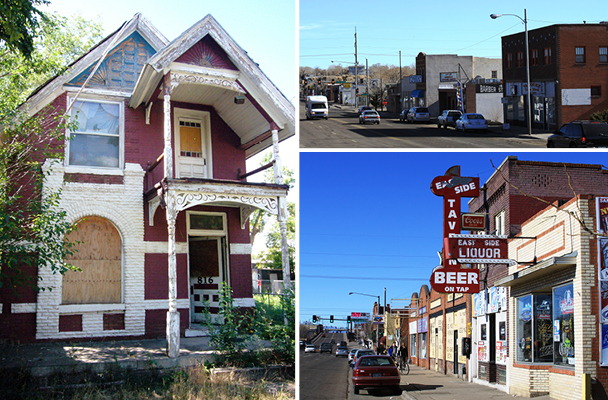Year Listed: 2012
County: Pueblo County
Construction Date: Various – 1872-1940
Threat When Listed: Various
Status: IN PROGRESS
The Historic Eastside Neighborhood in Pueblo is part of the larger Eastside neighborhood, but focuses on the residential and commercial district that was largely developed between 1880 and 1940. The neighborhood is physically separated from the rest of Pueblo by Fountain Creek and has historically been home to a mix of classes and ethnicities. In financial decline since the 1980s, the Eastside neighborhood is now 80% Hispanic and suffers from a lack of public amenities found in wealthier Pueblo neighborhoods. The historic Eastside features a wide range of architectural styles, including a highly unusual proliferation of Princess Ann style cottages with canted entrances, but the one commonality is that many of the historic homes are in poor condition.
The Eastside neighborhood suffers from a negative perception and the subsequent disinvestment has been disastrous. Vacancy rates are high, and many of the houses and businesses that are occupied suffer from deferred maintenance. Homes in the Historic Eastside neighborhood can be purchased for as little as $10,000.
City Officials have recognized the importance of the neighborhood and hired a planner to focus specifically on the Eastside neighborhood, with particular attention on economic development issues. A historic context report of the neighborhood (A Place Set Apart: The History and Architecture of Pueblo’s East Side Neighborhood) was published in 2009 and has increased awareness of the historic significance of the neighborhood. Recent focus has centered on the “Little Red House” and the neighboring community garden, a series of terrace block apartment buildings that have been rehabbed by the Housing Authority for permanently disabled veterans.
CPI met with Pueblo Planner Bill Zwink to discuss a plan for engaging the neighborhood. There has been little change since 2016. The site needs to determine a new use for the church and school building. Some preservation work has taken place, as well as infrastructure improvements. A new park and skatepark have been added to the neighborhood.




